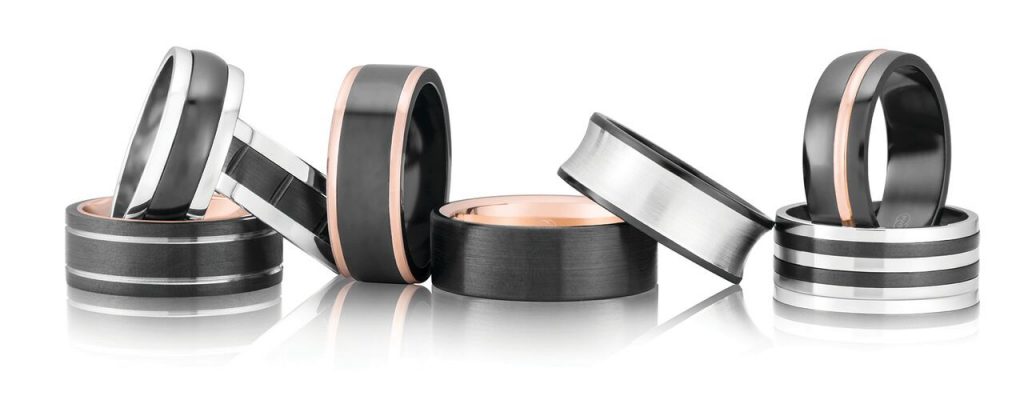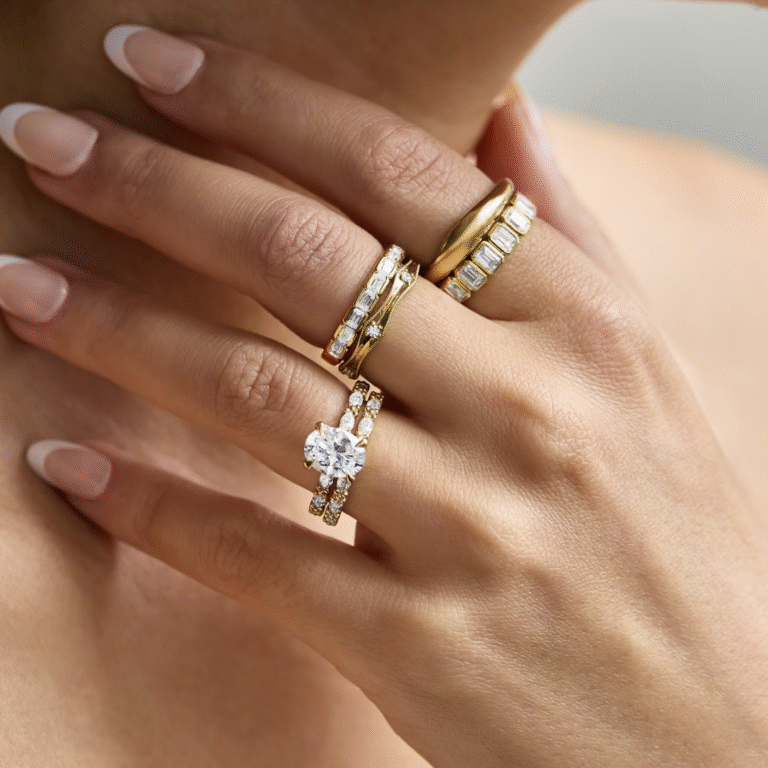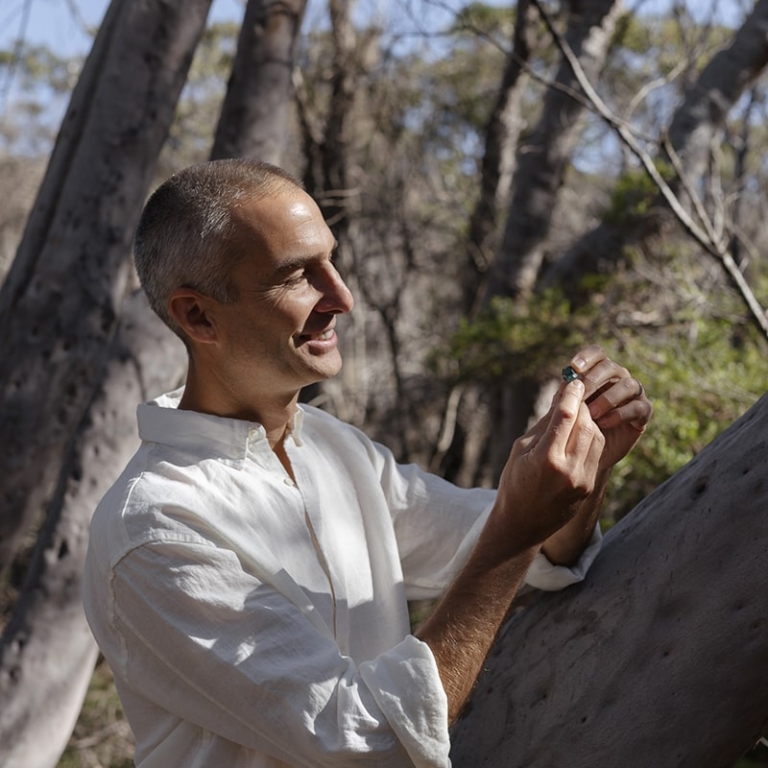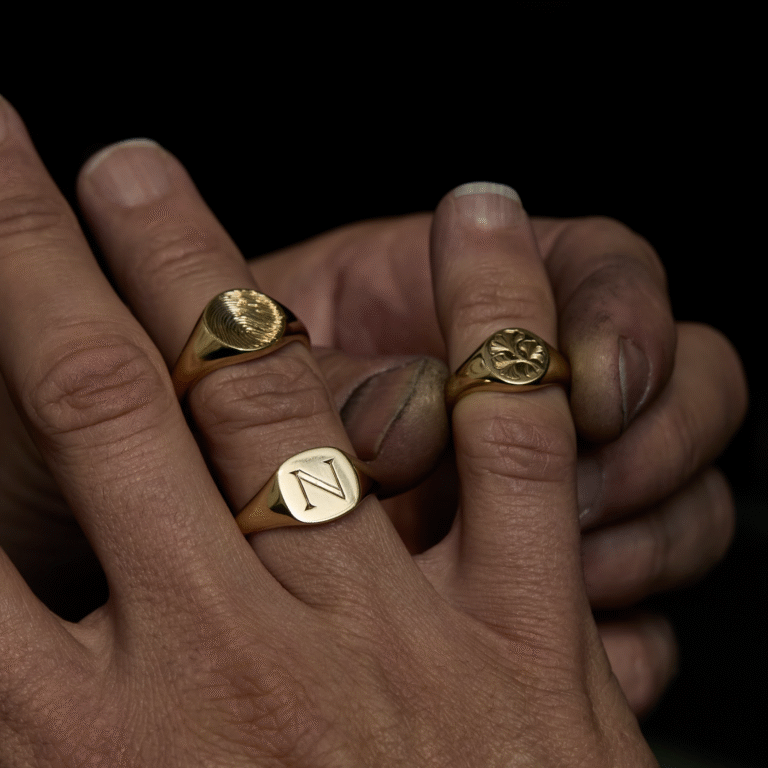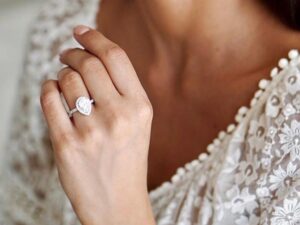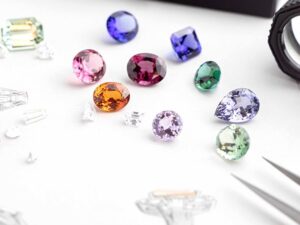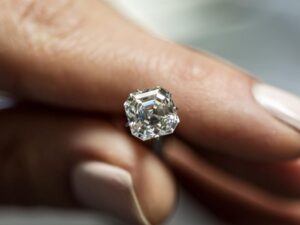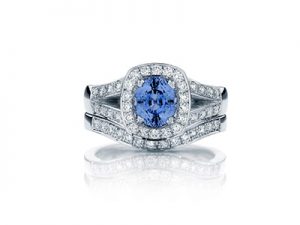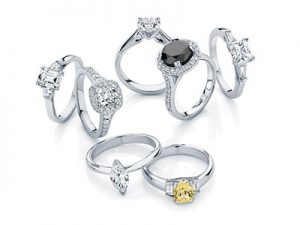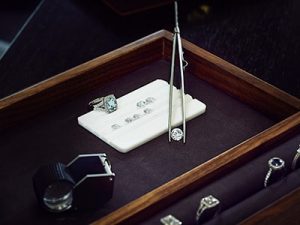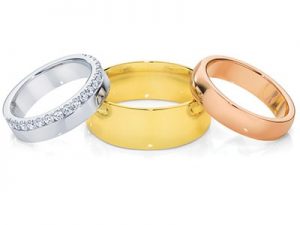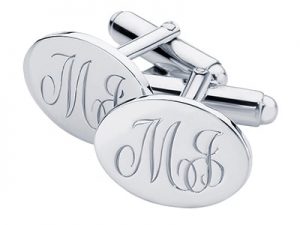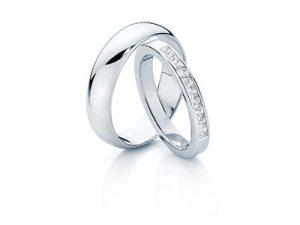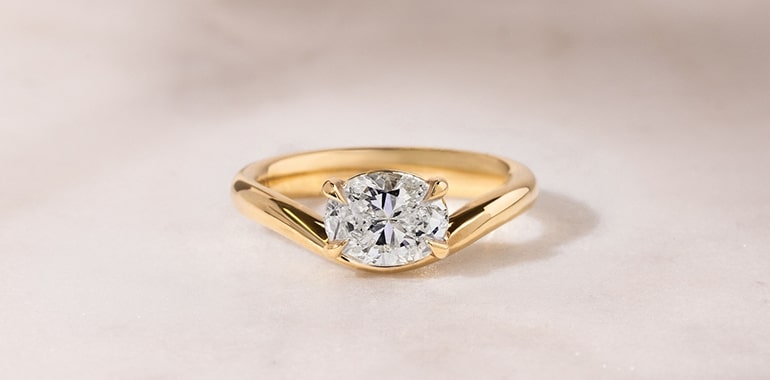Alternative Metals for Wedding Rings
by Kate Reid
October 17, 2019 / Learn About Metals, Men’s Jewellery, Wedding Rings
Traditionally, wedding bands are crafted from Gold or Platinum but what if these old school options don’t float your boat? Are there other choices worth considering? In this post, we’re going to discuss the pros and cons of some of the popular alternatives. Palladium, Titanium and Zirconium are wedding band metals you may not be familiar with. Perhaps you might be inspired as we explore the beauty of palladium, add some colour with titanium or if black is your thing, zirconium is a relatively new metal that is now available.
You may ask, why don’t we see engagement ring or other designs in these metals?
Due to the nature of these metals, they are generally more difficult to use and require techniques that differ from those used in traditional jewellery making. Wedding ring blanks are formed from a single extruded tube and individually machined on a lathe to the desired shape. There is no bending, forging or soldering involved at all.
Before we look at the individual metals there are a few things they all have in common – choose your size carefully. Most of these metals are either very difficult to resize, or can’t be resized at all. Engraving or setting stones may not be available due to the hardness of these metals. On the flip side, the attractions of some of these metals are the range of colours available.
Let’s look at the individual metals and see what is so attractive about them.
Palladium
One of the world’s rarest metals, palladium is a part of the platinum group of metals. Palladium looks and feels like it’s sister metal but it is lighter than platinum. Although first discovered in the early 1800’s palladium was only officially recognised as a precious metal in January 2010.

Like platinum, palladium is hypo-allergenic so it is a great choice if you have had any skin reactions with other metals. Stone setting and engraving is possible in palladium and (unlike white gold) it doesn’t need rhodium plating to be bright white.
In recent years the price of palladium has skyrocketed. On top of this, palladium is technically difficult to use and many designs may not be able to be made in palladium. Resizing and repairing palladium can also be problematic, this may help explain why it hasn’t become a popular choice of metal.
Titanium
Titanium is a naturally grey, light and incredibly strong metal. Named after the Titans from Greek mythology, it is abundant in nature and found in almost all living things as well as in water, soil and it has even been detected on the sun. Due to its hardness and its resistance to corrosion, titanium has been used in many industrial applications including in aerospace, automotive and medical industries to name a few.
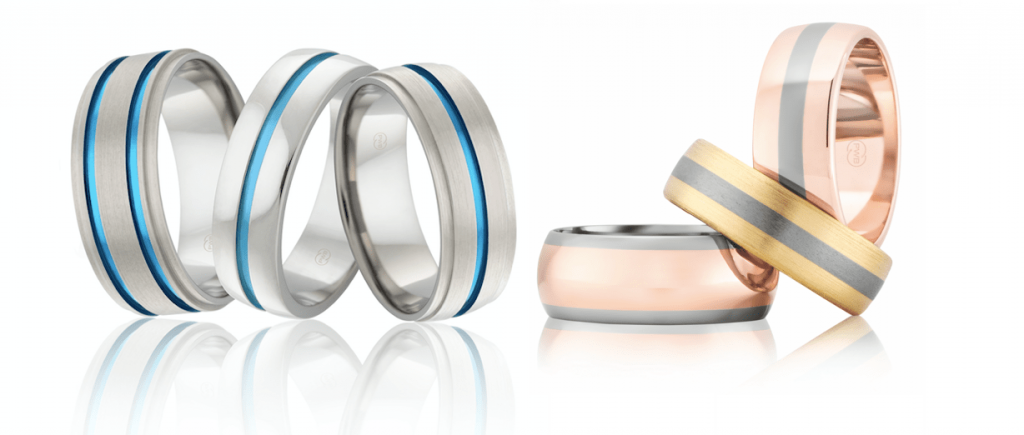
Titanium is hypo-allergenic, which means it’s excellent for those with allergies or sensitive skin – in fact, titanium is often used for surgical implants due to the fact the human body does not reject its presence.
Titanium is extremely light, you will hardly know you are wearing it. Another amazing property of titanium is the ability to anodise or colour the surface of the metal. An array of electric colours are available if you would like to add some colour to your ring. This is best used in recessed areas as the anodising is a surface treatment can scratch and wear over time. This can be redone in the future if needed. Titanium wedding ring designs can also incorporate precious metals creating a striking contrast of colours.
Zirconium
The new kid on the block when it comes to metals, Zirconium is a stunning greyish, white lustrous metal similar to titanium. It also has the same hypo-allergenic qualities, but it has one rather brilliant advantage. When heat-treated, Zirconium forms a silky, black oxide coating that is highly scratch-resistant, the surface of the metal transforms into a ceramic-like material which is incredibly hard.
Zirconium is not a ‘native metal’, i.e. is not found in the earth in the form we see it in. Instead, it is obtained from other minerals, usually by purifying zircon with chlorine. The black surface of zirconium wedding rings can be either polished or matte finished and there are some stunning designs with rose gold highlights.
Due to the hardness of zirconium and titanium, rings made from these metals are unable to be resized and the setting of stones is unavailable.
As we have seen there available some very interesting and beautiful alternative metals to the traditional gold and platinum. For the best advice and working knowledge of all the metals, come in and speak with one of the skilled, friendly jewellers in our studio at Larsen Jewellery. They will be able to answer all your questions and give some great advice to help you make the perfect choice for your wedding ring. For some more wedding ring inspiration, visit our gallery here!
